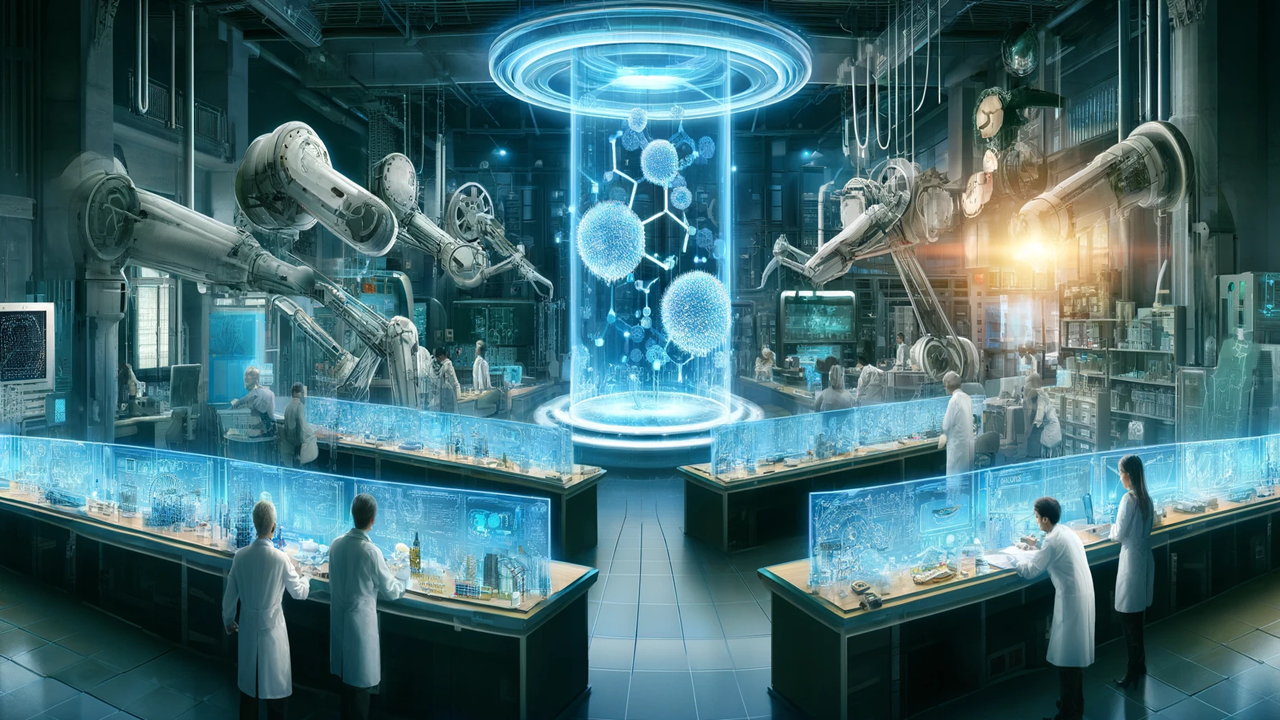Breaking the Resistance: AI's Role in Pioneering New Antibiotics
This article examines a groundbreaking AI model that designs new molecules to fight antibiotic-resistant superbugs, highlighting its potential to revolutionize antibiotic development and improve global health outcomes. It explores how AI enhances drug discovery processes and discusses the broader implications for medical research and public health.

The rise of antibiotic-resistant superbugs poses one of the most severe threats to global health today, prompting urgent calls for innovative solutions in the field of drug development. Enter artificial intelligence (AI): a groundbreaking AI model has recently been developed that can design new molecules specifically to combat these formidable pathogens. This significant advancement could revolutionize the pharmaceutical industry and significantly enhance public health security. "Breaking the Resistance: AI's Role in Pioneering New Antibiotics" explores this exciting development, examining how AI is set to transform the battle against drug-resistant infections.
The Challenge of Antibiotic Resistance
Antibiotic resistance has become a looming crisis, with superbugs that can withstand traditional treatments proliferating at an alarming rate. The overuse and misuse of antibiotics have accelerated this issue, leading to increasingly difficult infections, and sometimes impossible, to treat. This resistance results in higher medical costs, prolonged hospital stays, and increased mortality.
AI in Antibiotic Development
The newly developed AI model represents a significant leap in addressing this issue. It employs deep learning techniques to predict the efficacy of molecules against bacteria that are notoriously difficult to treat. This AI system not only speeds up the drug discovery process but also enhances the precision with which these new compounds are identified and optimized.
How the AI Model Works
The AI model functions by screening millions of chemical compounds quickly and efficiently, predicting their interactions with bacterial cells without the need for initial lab testing. This method drastically reduces the time and cost traditionally associated with drug discovery. Moreover, AI's ability to learn from each test makes it increasingly effective over time, continuously improving its predictions and generating better candidates for future antibiotics.
Advantages Over Traditional Methods
Traditional drug discovery methods are often slow and costly, heavily reliant on trial and error. In contrast, AI can analyze vast datasets of molecular structures and their pharmacological properties, identifying potential antibiotics that might have been overlooked by human researchers. This not only accelerates the discovery process but also brings a higher level of specificity to the types of bacteria each new antibiotic can target.
Implications for Medical Research and Public Health
The implications of AI-driven antibiotic development are vast. By providing a powerful tool to outpace the development of resistance, AI could fundamentally alter the landscape of infectious disease treatment. This technology offers hope not only for treating conditions that are currently manageable but also for addressing future outbreaks of resistant infections.
Ethical and Regulatory Considerations
While the potential benefits are significant, this new approach also raises important ethical and regulatory considerations. The integration of AI into drug development necessitates rigorous testing and validation to ensure safety and efficacy. Moreover, there is a need for clear guidelines on how AI-designed drugs are reviewed and approved by regulatory bodies.
Challenges Facing AI in Drug Development
Despite its advantages, AI in drug development faces several challenges. These include data privacy issues, the need for vast and accurate datasets, and the integration of AI tools with existing pharmaceutical development pipelines. Addressing these challenges is crucial for the successful implementation of AI in creating new antibiotics.
Looking Forward
As AI technology continues to advance, its integration into antibiotic development promises not only to create new drugs but also to innovate the methods by which all medications are discovered and brought to market. Ongoing research and collaboration between AI experts and biomedical scientists will be key to realizing the full potential of AI in combating antibiotic resistance.
Conclusion
The development of an AI model capable of designing new antibiotic molecules marks a turning point in the fight against superbugs. This fusion of technology and science heralds a new era of medical research, where AI-driven innovations could soon provide us with the next generation of antibiotics. If successful, AI could not only curb the rise of resistant bacteria but also redefine the boundaries of pharmaceutical science.










